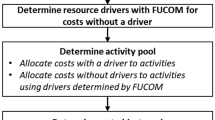Abstract
This is an investigation into the design of a market-based process to replace NASA's current committee process for allocating Shuttle secondary payload resources (lockers, Watts and crew). The market-based process allocates budgets of tokens to NASA internal organizations that in turn use the budget to bid for priority for their middeck payloads. The scheduling algorithm selects payloads by priority class and maximizes the number of tokens bid to determine a manifest. The results of a number of controlled experiments show that such a system tends to allocate resources more efficiently by guiding participants to make resource and payload tradeoffs. Most participants were able to improve their position over NASA's current ranking system. Furthermore, those that are better off make large improvements while the few that do worse have relatively small losses.
Similar content being viewed by others
References
Banks, J., Ledyard, J., and Porter, D. (1989). “Allocating Uncertain and Unresponsive Resources: An Experimental Approach.” Rand Journal of Economics. 1–25.
Clearwater, S., Costanza, R., and Schroeder, B. (1995). “Commodity Thermal Markets in Building Energy Management.” Energy Engineering. 92(3), 6–22.
Kagel, J. and Roth, A. (1995). The Handbook of Experimental Economics. Princeton University Press.
Ledyard, J. (1993). “The Design of Coordination Mechanisms and Organizational Computing.” Journal of Organizational Computing. 1, 121–134.
Ledyard, J., Rangel, A., and Porter, D. (1994). “Using Computerized Exchange Systems to Solve An Allocation Problem in Project Management.” Journal of Organizational Computing. 4(3), 271–296.
McAfee, P. and McMillian, J. (1996). “Analyzing the Airwaves Auction.” Journal of Economic Perspectives. 10, 159–175.
Milgrom, P. (1998). Auction Theory for Privatization. Cambridge University Press.
Olson, M. (1993). “Dominant and Nash Strategy Mechanisms with Transfers in the Assignment Problem.” TRACE Discussion Paper 93-17, Tinbergan Institute, Amsterdam-Rotterdam.
Plott, C. (1989). “An Updated Review of Industrial Organization: Applications of Experimental Economics.” In R. Schmalensee and R. Willig (eds.), Handbook of Industrial Organization.
Plott, C. (1994). “Market Architectures, Institutional Landscapes and Testbed Experiments.” Economic Theory. 4(1), 3–10.
Rassenti, S., Smith, V., and Bulfin, R. (1982). “A Combinatorial Mechanism for Airport Time Slot Allocation.” Bell Journal of Economics. 13, 402–417.
Smith, V. (1982). “Microeconomic Systems as An Experimental Science.” American Economic Review. 72, 923–955.
Wessen, R. and Porter, D. (1997). “A Management Approach for Allocating Instrument Development Resources.” Space Policy. 13(3), 191–201.
Wohl, A. (1997). “The Feasibility of An Index-Contingent Trading Mechanism.” Management Science. 43(1), 112–121.
Author information
Authors and Affiliations
Rights and permissions
About this article
Cite this article
Ledyard, J., Porter, D. & Wessen, R. A Market-Based Mechanism for Allocating Space Shuttle Secondary Payload Priority. Experimental Economics 2, 173–195 (2000). https://doi.org/10.1023/A:1009900310537
Issue Date:
DOI: https://doi.org/10.1023/A:1009900310537




